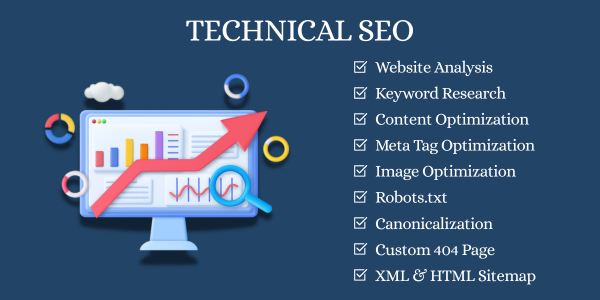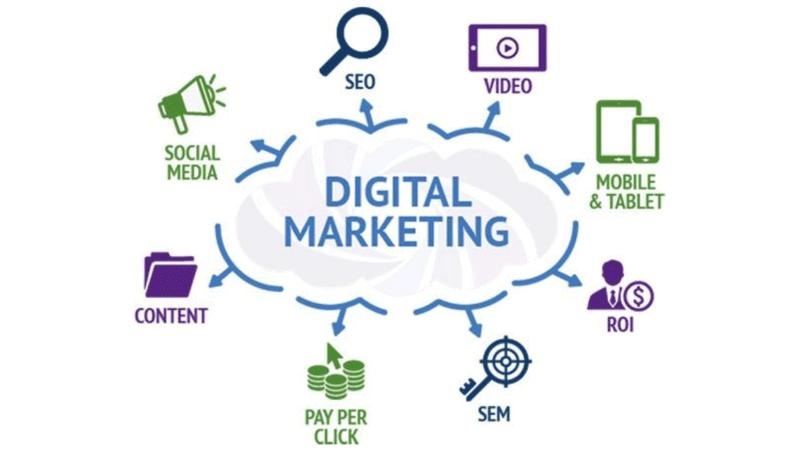
You can think of your website as a gorgeous store in the busiest part of town. The shelves are neatly arranged, the products are top-notch, and the lighting is perfect. But there’s one major problem: the main road to your store is full of potholes, the signboard is faded, and there’s no clear door for customers to enter.
That’s what happens when you focus only on content and design but ignore Technical SEO. Your site might look amazing, but search engines and visitors could struggle to find or navigate it. And in the digital world, if people (and search bots) can’t find you, your rankings — and sales — will suffer.
Understanding Technical SEO
Technical SEO refers to all the behind-the-scenes optimizations that help search engines crawl, understand, and index your website efficiently. Unlike content SEO, which focuses on keywords and articles, technical SEO ensures your site’s infrastructure is solid and search-engine-friendly.
It’s the foundation of your online presence. Without it, your high-quality blogs, videos, and product pages may remain invisible in search results — like billboards placed in the middle of a forest.
Key elements of technical SEO include:
- Website speed – Fast-loading pages improve user satisfaction and keep bounce rates low.
- Mobile optimization – With over half of global web traffic coming from mobile devices, your site must work seamlessly on all screen sizes.
- Secure connection (HTTPS) – Encrypting your site builds trust and is favored by search engines.
- Crawlability – Ensuring search engine bots can explore every important page on your site.
- Indexability – Making sure those crawled pages are actually stored and displayed in search results.
- Structured data – Adding extra code that helps search engines better understand your content.
Why Technical SEO Matters for Rankings
1. It Opens the Door to Search Engines
Search engines use crawlers (also called bots or spiders) to scan websites. If your site has blocked pages, broken links, or messy architecture, crawlers can’t easily access your content. When they can’t find your pages, they can’t rank them.
2. It Improves User Experience — a Ranking Factor
Google’s algorithm increasingly rewards sites that offer a smooth, enjoyable user experience. This means quick loading times, mobile-friendly design, and intuitive navigation. When visitors stay longer and interact with your content, it sends positive signals to search engines.
3. It Makes Your Content Work Harder
You could have the most insightful blog posts in your niche, but without proper technical optimization, they might never reach your target audience. Technical SEO removes roadblocks so your content can actually do its job: attracting, informing, and converting visitors.
Common Technical SEO Mistakes to Avoid
Even small technical issues can slowly drag down your rankings. Some frequent mistakes include:
- Slow page speed – Caused by oversized images, poor hosting, or excessive scripts.
- Non-responsive design – Websites that break or load poorly on mobile devices.
- Broken links (404 errors) – Links that lead to missing pages frustrate both users and crawlers.
- Duplicate content – Confuses search engines and dilutes ranking potential.
- Missing XML sitemap – Without it, crawlers might miss important pages.
- No SSL certificate – Unsecured sites risk losing both traffic and trust.
How to Get Started with Technical SEO
You don’t have to be a tech wizard to make improvements. Here’s a beginner-friendly approach:
- Run a Site Audit – Use free tools like Google Search Console or paid options like Ahrefs, SEMrush, or Screaming Frog. These scan your site for issues.
- Improve Page Speed – Compress images, enable browser caching, and use a content delivery network (CDN).
- Ensure Mobile-Friendliness – Test your site on different devices and use Google’s Mobile-Friendly Test tool.
- Switch to HTTPS – Install an SSL certificate to secure your site and improve rankings.
- Fix Broken Links – Redirect outdated URLs or repair internal links.
- Optimize Your Site Structure – Create a logical hierarchy with clear navigation and internal linking.
- Submit an XML Sitemap – This acts as a map for search engines to find your pages easily.
The Overlooked Benefits of Technical SEO
Beyond rankings, strong technical SEO has side benefits:
- Lower bounce rates – Visitors stay longer when your site loads quickly and works smoothly.
- Better conversion rates – A seamless browsing experience encourages users to take action.
- Long-term stability – Fixing technical issues now prevents bigger problems later.
It’s not a one-time job either — websites change over time, and regular audits keep them in peak condition.
Technical SEO in the Bigger Picture
Technical SEO works hand in hand with content and off-page SEO. Think of SEO as a three-legged stool:
- Content SEO gives you valuable information to share.
- Off-page SEO earns you authority and backlinks.
- Technical SEO ensures your site’s infrastructure supports both.
If one leg is weak, the stool tips over — and so does your search performance.
Final Thoughts
Technical SEO isn’t the most glamorous part of digital marketing, but it’s the backbone of every successful website. Without it, your site might be a beautifully designed ghost town — impressive but deserted.
By making your site fast, secure, mobile-friendly, and easy to navigate, you give both users and search engines a reason to stay. In a world where attention spans are short and competition is fierce, a well-optimized technical foundation is your ticket to visibility and growth.
So before you publish your next great piece of content, take a step back and ask: Can search engines find it? Can visitors enjoy it? If the answer is yes to both, you’re already ahead of the game.








